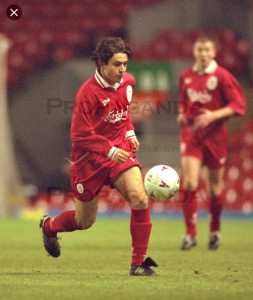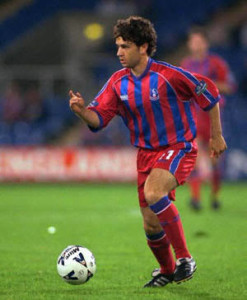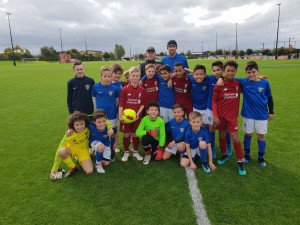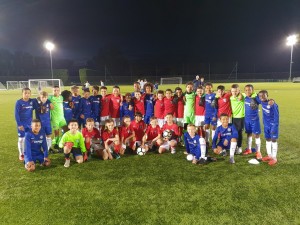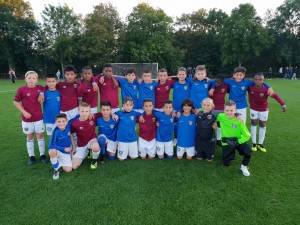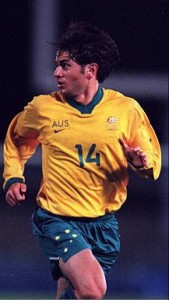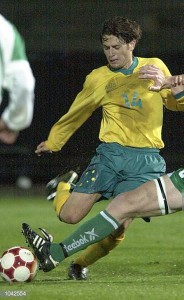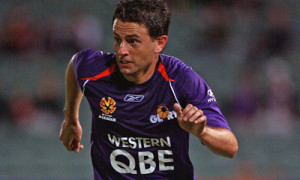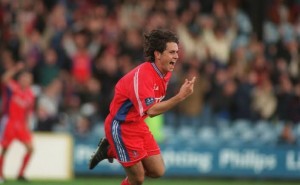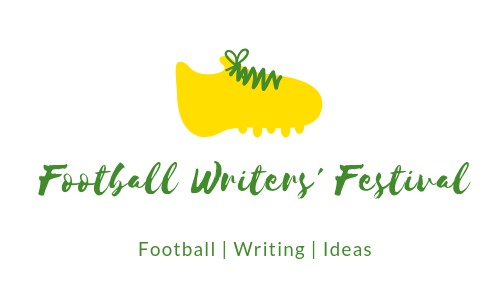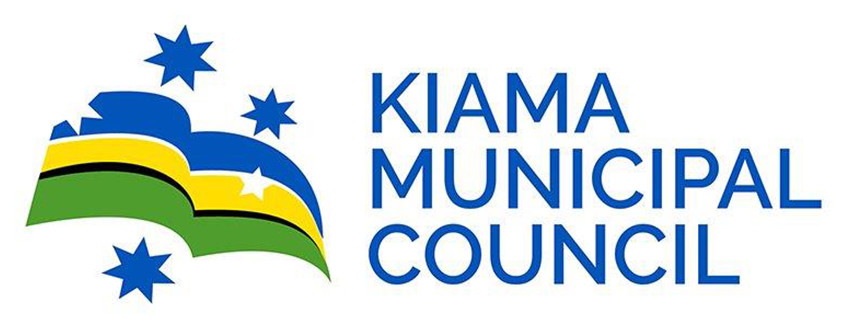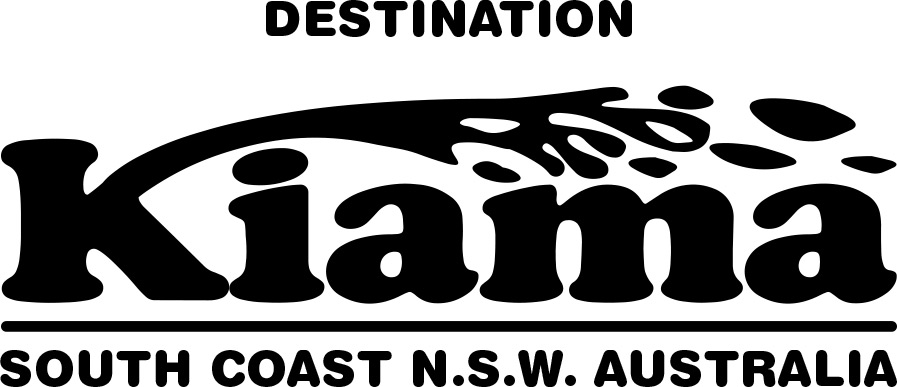It’s no co-incidence that Nick Rizzo, the former Liverpool, Crystal Palace and Milton Keynes Dons playmaker is now running one of the most successful football academies in Australia.
He was a teenage star when he first trialled at Liverpool F.C in 1996 which created a pathway for a dream career in European football.
However, due to some unfortunate decision making and a series of injuries, Rizzo never reached the heights his obvious talent deserved.
Nevertheless, Rizzo stuck to his guns and was determined to make a life after football which is reflected in the success of the Nick Rizzo Football Academy where best practice is paramount.
In this interview with Roger Sleeman, Nick Rizzo talks about his experiences in English football, the errors of choice he made in his career, the recent trip to England with his Academy players and youth development in Australia and England.
ROGER SLEEMAN
Looking back at those exciting years in your football career, what stands out?
NICK RIZZO
As I sit in Queens Park doing this interview, I recall those thousands of hours practising to achieve that common dream of any young player to play professionally in Europe.
My first introduction to Liverpool FC at the age of seventeen began a career away from home for eleven years before I returned to the A-League and ultimately became a full time youth coach.
All these years later, I still retain my love for football and committment to contribute to its progress in Australia.
R.S.
Can you recall some of the highlights of that professional career?
N.R.
After former Socceroo, Archie Blue, hooked me up with Liverpool, I clearly remember my first day of trialling when I jumped into that old black taxi, unaware what was in store for me.
I was welcomed by the legendary, Steve Heighway, who was the first team coach and while training with other young players, I also met Steven Gerrard, Jamie Carragher, David Thomson and Michael Owen.
I was in the u/18 squad for a week or so and played against Notts Forest and Oldham while retaining my place in that squad for the rest of the season.
In my second season, I was involved with the first team squad every day, rubbed shoulders with other greats, Robbie Fowler and Steve McManaman and had my own first team number.
I was only eighteen years old, and as I look back, I was in too much of a hurry.
R.S
What advice do you have for young players?
N.R.
I was at Liverpool F.C at eighteen years of age with a pro contract and yet in Australia we don’t have players of this age in 1st team A-League squads.
Young players need patience but in saying that, looking from outside Liverpool, the club was the biggest in the world while from inside it was the smallest.
I was young and lured by financial rewards and although I was in the Australian squad and offered a four year contract with Liverpool, I was swayed by the offer of greater money and a guarantee of first team football with Crystal Palace.
R.S.
Steve Heighway tried to persuade you to stay at Liverpoool.
Did you realise how great this man was?
N.R.
My contract had expired at Liverpool and I was initially undecided which direction to take so I continued in pre-season training.
One week later I chose a move to Palace and ironically I met Gerard Houllier on the same day he was taking over the reins as Liverpool manager.
I had some idea of the hero worship bestowed on Steve Heighway by Liverpool supporters but youthful exhuberance was telling me I should be playing first team football, even though Crystal Palace was in the Championship.
Heighway said if I didn’t make the first team, the club could loan me out and even at the age of twenty or twenty two, I could be snapped up by a Championship club.
What I really needed was the right mentors but nevertheless, I still played thirty six first team games for Crystal Palace in those two seasons.
R.S.
Your memories of Crystal Palace?
N.R.
Selhurst Park was a formidable place as we had 20,000 crowds and I played with Craig Moore, Michele Padovano, Craig Foster, Matt Jensen who later went to Blackburn, Ji Hai Sun, the Chinese international who eventually moved to Manchester City, and probably the best Attillio Lombardo who moved back to Italy and won a Serie A title with Lazio.
Terry Venables was a great manager but he was sacked at the end of the 1998/99 season
The club subsequently went into administration and the following season, Steve Coppell became the new manager.
Unfortunately, I was mainly playing off the bench under Coppell so it was a hard time for me.
R.S.
What was the truth behind your sparing use by Coppell?
N.R.
Coppell suggested to me that I couldn’t cope with the physicality of the Championship but it was more deep seated than that because the fans were asking the same questions.
It really dates back to my second season at Liverpool when during the January transfer window, Steve Coppell who was the first team coach at Palace, made an offer to Liverpool for my services.
I discussed the offer with Archie Blue and we accepted.
However, soon after I changed my mind which didn’t exactly engender my relationship with Coppell.
I believe Coppell had a long memory so when he replaced Terry Venables as first team coach in the 1999/2000 season, it was not going to be easy for me to command a regular spot.
R.S.
In 1999 you played for an Australian Olympic squad in a three match series against an under 23 Brazilian team and you were the star of the match in Adelaide. With your incredible technique and ability to beat players you reminded fans of the great Marshall Soper.
Can you elaborate on that match?
N.R.
I did receive high praise in that match and it was largely due to my training at Liverpool every day where I was in my second season and playing at a different level.
Ironically, many of the Brazilian players played for their u/17 team in the 1995 finals tournament im Ecuador.
We were beaten 3-1 by them in a quarter final and they were beaten by Ghana in the final.
In that squad were Brett Emerton, Vince Grella, Jason Culina, Harry Kewell and Danny Allsop who won the Golden Boot with six goals in the tournament.
R.S.
Who were your heroes at Liverpool?
N.R.
John Barnes was an icon and he related to me because I came from another country and I learned so much from him about using the ball in wide play.
Steve McManaman was the master dribbler who opened up defences with deft technique and amazing runs.
Michael Owen was a footballer with a difference, possessing electric speed and with that special technique to score with very little backlift.
His ability to change direction at speed was exemplified in that mazy run against Argentina in the 1998 World Cup where nobody laid a hand on him before he scored.
In my second trial at Liverpool before the start of the 1995/96 season, we played Oldham, and in a 7-1 victory, Owen scored all seven goals.
R.S.
Can you retrace the recent trip of your Academy players to the U.K.?
N.R.
It was over four weeks from mid September and in the first two weeks, the u/10 and u11’s played while in the second two weeks the u/13’s and u/14’s were on show.
In the first group, there was a core who had been with me from the u/6’s where they have developed great technique, discipline and mastered a possession based game with high intensity going forward with added penetration.
In the nine games we played in the two week period against top academy sides, including Arsenal, West Ham, Derby and Chelsea we won five and lost four.
R.S.
How do you compare the standard of development in England with that of Australia?
N.R
Our u/11’s more than matched it with their opponents and in some games we were better.
We had a tough game against Chelsea but still managed to draw 3-3. Against Everton we played a team which hadn’t been beaten in two years and we held them to 2-2 at half time before conceding two goals in the second half.
The critical difference was, we had to play eighty minute games while we only play fifty minutes in Australia.
At the moment in Australia the u/14’s play sixty minutes and u/15’s play seventy minutes while they’re playing eighty minutes from u/10‘s in England.
R.S.
What else can we do to improve the level of our development in Australia?
N.R.
In England, I particularly noticed the superior use of the body by the English youth in respect to shielding and ball protection. They also have a longer passing range and players who have the ability to shoot from distance which is lacking in our game.
There’s also the amount of time players spent with their clubs which is far more than here.
For example, Western Sydney Wanderers youth teams only have three, one and a half hour sessions a week which just isn’t sufficient.
Basically, it‘s left to individual players to spend more time practising or participating in private academies.
However, I only have two sessions a week with my Academy players which is once again fairly limiting.

